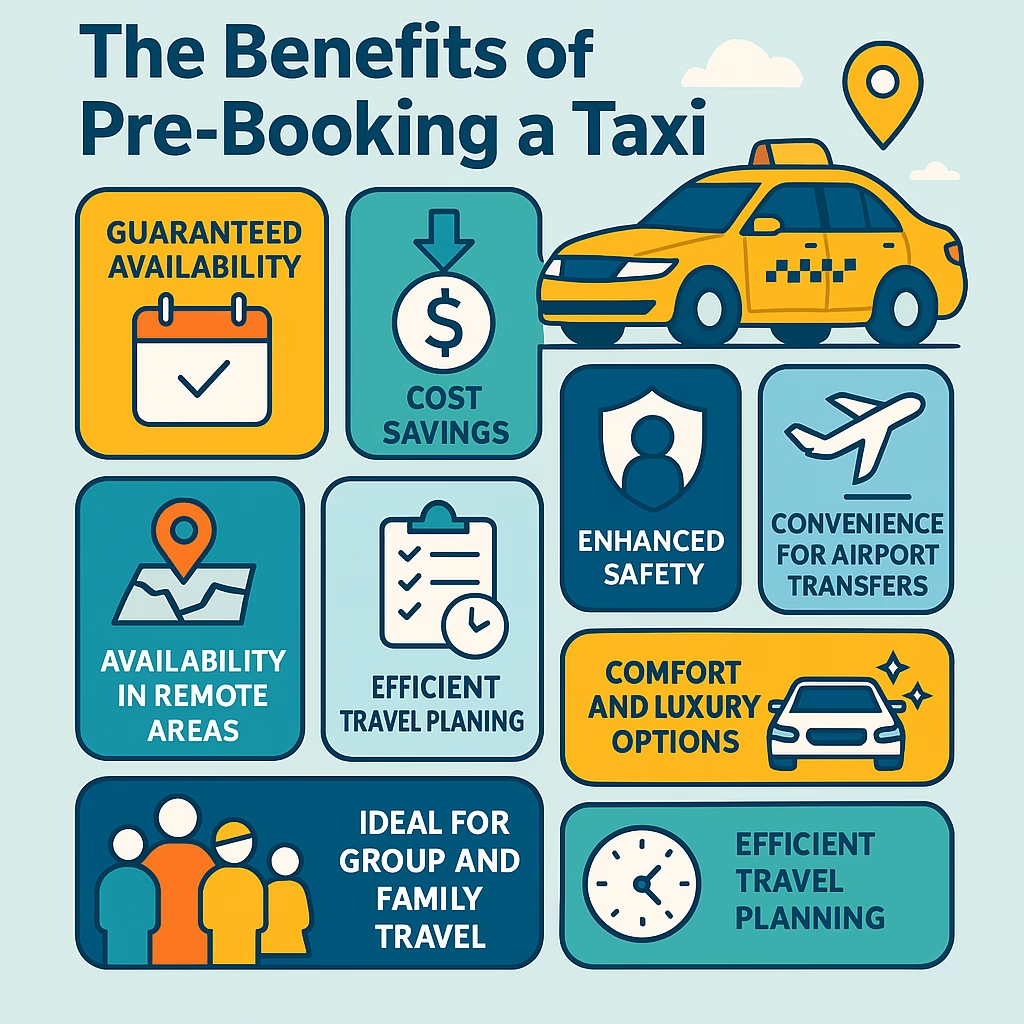Introduction
Driving a bus or shuttle is not just about transporting passengers; it is about ensuring their safety, comfort, and satisfaction. From navigating complex routes to managing diverse passenger expectations, drivers must balance multiple responsibilities while maintaining professionalism.
The Bus and Shuttle Driver Guide is a comprehensive resource for mastering these challenges. This article explores ten essential aspects of professionalism, passenger care, and journey management, providing actionable solutions to common problems. Whether you are a seasoned driver or new to the field, these insights will enhance your skills and elevate passenger experiences.
1. The Foundation of Professionalism: Building Trust and Credibility
The Issue
Professionalism is the cornerstone of a driver’s reputation. Passengers expect drivers to maintain high standards in their conduct, appearance, and communication. Failing to meet these expectations can lead to distrust, negative feedback, and reduced ridership.
Solutions
1. Maintain a Polished Appearance
First impressions matter. A clean and professional appearance signals to passengers that you take your responsibilities seriously. Wearing a uniform or professional attire adds a layer of credibility, while regular grooming reflects your attention to detail. A well-maintained vehicle is equally important; a spotless interior shows that you prioritize passenger comfort and hygiene.
Drivers should also consider consistency. Daily effort in maintaining a professional look, regardless of challenges like weather or long hours, reinforces a positive image. This commitment reassures passengers and establishes you as a reliable professional in the transportation industry.
2. Adopt Clear and Respectful Communication
Effective communication bridges the gap between drivers and passengers. Greeting passengers with a warm smile and addressing their concerns respectfully can transform the travel experience. When passengers feel heard, they develop trust in the service.
Transparency is key. Informing passengers about delays or route changes in real time reduces anxiety and demonstrates respect for their time. Clear communication, combined with a friendly tone and approachable body language, leaves a lasting positive impression.
3. Exhibit Responsibility and Punctuality
Punctuality is non-negotiable in the transportation industry. Drivers must adhere to schedules, as delays can cause passenger frustration and disrupt plans. Utilizing tools like GPS and dispatch systems such as LimoAnywhere can optimize route planning and minimize delays.
Proactive habits, such as checking traffic conditions before departure, ensure timely arrivals. A reputation for punctuality not only boosts customer satisfaction but also highlights your reliability and professionalism.
2. Mastering Passenger Care: Enhancing the Travel Experience
The Issue
Passenger care extends beyond driving; it encompasses understanding individual needs and creating a pleasant environment. Neglecting this aspect can lead to dissatisfaction, complaints, and lost ridership.
Solutions
1. Provide Accessibility Features
Inclusive transportation is vital for passenger satisfaction. Vehicles should be equipped with ramps, priority seating, and ample space for wheelchairs or mobility aids. Accessibility features not only comply with legal requirements but also ensure comfort for all passengers.
Drivers should familiarize themselves with these features and assist passengers when necessary. Quick and confident operation of accessibility tools demonstrates competence and fosters trust. This proactive approach enhances the overall travel experience, ensuring that every passenger feels valued and accommodated.
2. Show Empathy and Patience
Empathy and patience are indispensable traits for passenger care. Some travelers, such as elderly passengers or those with young children, may require additional assistance. By offering a helping hand and displaying understanding, drivers can create a supportive environment.
Handling difficult situations calmly and respectfully is equally important. Whether it’s an agitated passenger or an unforeseen delay, a composed and empathetic demeanor diffuses tension and maintains a positive atmosphere.
3. Offer Timely Updates and Information
Keeping passengers informed reduces uncertainty and builds trust. Drivers should use intercom systems or direct communication to share updates about delays or route adjustments. Clarity in these updates reassures passengers and minimizes frustration.
Providing information about landmarks, nearby attractions, or upcoming stops can also enhance the travel experience. This personalized touch adds value to the journey and showcases the driver’s attentiveness.
3. Safety First: Ensuring Passenger and Road Safety
The Issue
Safety is the most critical aspect of bus and shuttle driving. A single mistake can jeopardize passengers’ lives and tarnish the company’s reputation. Drivers face challenges such as unpredictable traffic, mechanical issues, and diverse passenger behavior.
Solutions
1. Conduct Pre-Trip Inspections
Regular vehicle inspections are essential for identifying and addressing potential safety hazards. Drivers should check brakes, tires, lights, and other critical systems before starting their routes. Identifying and resolving issues early prevents accidents and ensures smoother operations.
Partnering with reliable dispatch services, such as Saztech Solutions, can further streamline maintenance scheduling. A well-maintained vehicle reflects a commitment to passenger safety and professional standards.
2. Implement Defensive Driving Techniques
Defensive driving minimizes risks in unpredictable traffic conditions. Techniques such as maintaining a safe following distance, anticipating other drivers’ actions, and adhering to speed limits enhance safety. Drivers should also remain vigilant and avoid distractions, such as mobile phones while operating the vehicle.
Ongoing training in defensive driving builds confidence and equips drivers to handle emergencies effectively. Regular refresher courses ensure that safety practices remain top-of-mind.
3. Foster a Safety-Oriented Culture
Promoting a culture of safety within the organization emphasizes its importance. Regular team meetings, safety audits, and feedback sessions encourage adherence to safety protocols. Drivers who actively participate in these initiatives contribute to a safer travel environment for everyone.
4. Managing Stress: Staying Calm Under Pressure
The Issue
Driving a bus or shuttle can be a high-stress job. Navigating traffic, meeting tight schedules, and managing passenger expectations can overwhelm drivers. Prolonged stress affects performance, leads to mistakes, and may result in burnout.
Solutions
1. Adopt Stress-Relief Techniques
Stress management starts with self-care. Drivers should practice relaxation techniques, such as deep breathing or mindfulness exercises, during breaks. These practices help regulate emotions and maintain focus.
A consistent schedule, adequate rest, and a healthy diet further enhance stress resilience. Drivers who prioritize their well-being are better equipped to manage high-pressure situations calmly and effectively.
2. Utilize Time Management Tools
Efficient time management alleviates the pressure of meeting schedules. Tools like LimoAnywhere or other dispatch software help drivers plan routes, account for delays, and maintain on-time performance. By relying on these tools, drivers can reduce uncertainty and stress.
Regular communication with dispatch teams also ensures smoother operations. Discussing potential issues beforehand allows for proactive adjustments, minimizing last-minute complications.
3. Seek Support from Supervisors and Peers
Open communication within the workplace fosters a supportive environment. Drivers should feel comfortable discussing stressors with supervisors or colleagues. Sharing experiences and learning coping strategies from peers can provide valuable insights.
Employers can further support drivers by offering stress management training and ensuring access to mental health resources. A collaborative approach to managing stress benefits both drivers and the organization.
5. Effective Route Management: Navigating Challenges
The Issue
Unexpected route changes, traffic congestion, and poor planning can disrupt schedules and frustrate passengers. Effective route management is essential to ensure timely arrivals and seamless operations.
Solutions
1. Plan Routes in Advance
Thorough route planning is the foundation of effective time management. Drivers should familiarize themselves with their assigned routes, including potential bottlenecks and alternative paths. GPS systems and real-time traffic updates enable informed decision-making.
Regularly updated dispatch software can further optimize routes by providing dynamic adjustments. Staying ahead of potential delays ensures smoother operations and enhances passenger satisfaction.
2. Develop Contingency Plans
Preparedness for unexpected scenarios is crucial. Drivers should identify alternative routes in advance and remain flexible when deviations are necessary. For instance, if roadwork obstructs the primary path, knowing nearby detours minimizes delays.
Training programs that simulate common challenges can enhance drivers’ adaptability. Practicing these scenarios equips drivers to handle real-life situations effectively.
3. Communicate Changes Proactively
Informing passengers about route adjustments is vital for maintaining trust. Drivers should use intercom systems or mobile notifications to update passengers in real time. This transparency reassures passengers and demonstrates professionalism.
Involving dispatch teams in route changes ensures seamless communication and coordination. This collaborative approach minimizes disruptions and reinforces the driver’s reliability.
6. Exceptional Customer Service: Beyond Transportation
The Issue
Passengers expect more than just transportation; they value courtesy, attentiveness, and a personalized experience. Neglecting customer service can lead to dissatisfaction and damage the company’s reputation.
Solutions
1. Engage with Passengers Positively
Friendly interactions enhance passenger experiences. Greeting passengers warmly, answering their queries patiently, and addressing concerns respectfully foster a positive environment.
Drivers should also be attentive to passenger needs, such as assisting with luggage or ensuring elderly travelers are seated safely. These small gestures leave a lasting impression and encourage repeat business.
2. Handle Complaints Gracefully
Complaints are opportunities to improve. Drivers should listen actively to passenger grievances, apologize sincerely, and offer solutions whenever possible. Maintaining composure during tense situations reflects professionalism.
Employers can support drivers by providing training in conflict resolution and customer service. Equipping drivers with these skills ensures effective handling of complaints.
3. Enhance the Overall Experience
Offering value-added services enhances passenger satisfaction. For instance, providing onboard Wi-Fi or sharing information about local attractions adds to the travel experience.
Drivers who go the extra mile to ensure passenger comfort set themselves apart. Their efforts contribute to building a loyal customer base and elevating the company’s reputation.
7. Time Management: Balancing Efficiency and Passenger Comfort
The Issue
Balancing tight schedules with passenger comfort can be challenging. Rushing to meet deadlines may compromise safety and service quality, while delays frustrate passengers.
Solutions
1. Prioritize Realistic Scheduling
Setting achievable schedules is essential. Dispatch teams should collaborate with drivers to create timeframes that account for traffic, boarding delays, and rest breaks. Realistic expectations reduce pressure and allow for smoother operations.
Drivers should also communicate regularly with dispatch teams to address unexpected delays. This proactive approach ensures timely adjustments and minimizes passenger inconvenience.
2. Use Technology to Stay on Track
Advanced tools like LimoAnywhere assist drivers in maintaining schedules efficiently. These systems provide real-time updates, optimize routes, and reduce manual planning.
Regularly updating these tools with accurate data ensures reliability. Drivers who embrace technology improve their time management skills and enhance overall performance.
3. Focus on Passenger Comfort
Efficiency should not come at the expense of passenger comfort. Drivers should avoid abrupt stops or excessive speeding to make up for lost time. Prioritizing smooth rides ensures safety and satisfaction.
Passengers appreciate drivers who maintain a calm and steady demeanor, even under time constraints. Striking this balance reflects professionalism and care.
8. Crisis Management: Handling Emergencies Effectively
The Issue
Emergencies such as medical incidents, mechanical failures, or accidents can occur unexpectedly. Drivers must be prepared to manage these situations calmly and efficiently.
Solutions
1. Undergo Comprehensive Training
Regular training in first aid, vehicle troubleshooting, and emergency protocols equips drivers to handle crises. Employers should ensure that all drivers are certified in these areas.
Simulated drills can further enhance preparedness. Practicing real-life scenarios builds confidence and ensures swift, effective responses during emergencies.
2. Maintain Clear Communication
Keeping passengers informed during emergencies is crucial. Drivers should calmly explain the situation, provide updates, and outline next steps. Clear communication reassures passengers and prevents panic.
Coordination with dispatch teams and emergency services ensures timely assistance. Drivers who prioritize communication foster a sense of safety and trust.
3. Focus on Passenger Safety
Passenger safety is the top priority during emergencies. Drivers should guide passengers to safety, provide necessary assistance, and follow established protocols.
A composed and decisive approach minimizes risks and ensures positive outcomes. Passengers remember drivers who prioritize their well-being, even in challenging situations.
9. Adapting to New Technologies: Staying Ahead
The Issue
Technology is transforming transportation. Drivers who resist innovation risk falling behind, while those who embrace it gain a competitive edge.
Solutions
1. Embrace Dispatch Software
Modern dispatch systems streamline operations. Tools like LimoAnywhere enhance route planning, passenger tracking, and communication.
Drivers should actively learn and adopt these technologies. Familiarity with new tools improves efficiency and demonstrates adaptability.
2. Stay Updated on Industry Trends
Keeping up with technological advancements ensures relevance. Drivers should attend training sessions, read industry publications, and participate in webinars to stay informed.
Proactive learning builds expertise and prepares drivers for future innovations. Embracing change reflects a forward-thinking mindset.
3. Leverage Mobile Apps for Passenger Convenience
Mobile apps enhance passenger experiences. Features like real-time tracking, digital ticketing, and feedback options add value to the service.
Drivers who promote and utilize these apps improve accessibility and satisfaction. This integration enhances the overall travel experience.
10. Maintaining Work-Life Balance: Sustaining Long-Term Success
The Issue
Long hours and irregular schedules can disrupt work-life balance. Over time, this imbalance affects health, job performance, and personal relationships.
Solutions
1. Set Boundaries and Prioritize Rest
Drivers should establish clear boundaries between work and personal life. Taking regular breaks and adhering to a consistent schedule supports physical and mental health.
Employers can assist by offering flexible schedules and ensuring adequate time off. A balanced approach promotes well-being and job satisfaction.
2. Engage in Recreational Activities
Hobbies and leisure activities provide relaxation and enjoyment. Drivers should dedicate time to interests outside work, such as sports, reading, or spending time with family.
Recreational pursuits rejuvenate energy and reduce stress, enabling drivers to perform better on the job. A fulfilled life outside work fosters overall happiness.
3. Seek Employer Support
Open communication with employers about work-life balance challenges encourages solutions. Flexible policies, wellness programs, and supportive management contribute to a positive workplace culture.
Drivers who feel supported by their organization are more likely to excel in their roles. This mutual commitment benefits both employees and the company.
Conclusion
Being a successful bus or shuttle driver requires a blend of professionalism, technical expertise, and interpersonal skills. By addressing common challenges and implementing these solutions, drivers can elevate their performance and deliver exceptional passenger experiences.
For enhanced operations, consider the dispatch and customer support services from Saztech Solutions. Visit https://www.saztech-solutions.com/ to learn more.
Home | About Us | Pricing | Get Started | FAQ | Dispatch Daily | Contact Us
WhatsApp | Facebook | LinkedIn





Leave a Reply